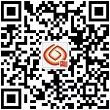The method of vertically fixing short fibers (typically 0.03 to 0.5 cm in length) to a substrate coated with an adhesive is called flocking. What does flocking mean? What material is flocking? The following introduces the relevant knowledge of flocking.
Nearly debut flocking fabric printing, color lattice, wicker and other varieties of more than 80 species. The fabric width is mainly based on 150cm, and the current market price gap is high and low, with a high of 18.00 yuan/meter and a low value of only 7.00 to 8.00 yuan/meter. This fabric has a wide range of uses. It is not only an ideal fabric for making winter ladies' suits, skirts, and children's clothing, but also is widely used in the field of home textiles. Currently, it is mainly used for sofas, cushions, cushions and other fabrics. Made of clothing, both warm and warm, but also add a touch of charming. Knitting flocking fabrics can also be used to make scarves. It focuses on keeping warm and warm, and middle-aged and elderly women are happy to enjoy. Although the amount of fabrics used per item is lower than that of clothing, there is a wide demand and everyone enjoys both men and women. In the future, with the improvement and update of flocking technology, flocking fabrics will have great potential. After the weather is expected to turn cold, sales prospects for flocked fabrics are promising.
According to the different flocking products, choose the appropriate flocking method, generally divided into three types:
Flocking machine line flocking
The flocking assembly line can realize the complete automatic completion of the gluing, flocking, drying and floating pile cleaning of articles, such as: flocking cloth, leather, paper, non-woven fabric, PVC, plastic sheet, sponge, each Crafts, toys, automotive plastic parts, storage boxes, car seals, trims, blister boxes, cardboard, calendars, couplets, New Year pictures, packaging flocking printing of gift boxes.
Box flocking
According to the size and shape of the flocked product, the flocking box is made, the pile is placed in the box, and the power is turned on. Thus, a high-voltage electric field is formed in the flocking box, and the flocked product is sent into the box from one end of the flocking box. After three to five seconds, after the flocking is completed, it is removed from the other end of the box and dried or dried.
Sprinkler type flocking
Connected to the power supply, the tens of thousands of volts of static electricity generated by the flocking machine is discharged into the spray head. The fluff in the spray head is negatively charged, and then the adhesive is sprayed on the surface of the plant body to move the spray head close to the flocked object. Under the action of the high-voltage electric field, it flies up from the nozzle to the surface of the flocked object, and is vertically planted on the surface of the object coated with adhesive.
Flocking features: strong three-dimensional sense, bright colors, soft touch, luxurious and noble, gorgeous warm, vivid image, non-toxic and tasteless, thermal insulation, no flocking, friction resistance, smooth without gap.
The surface of various product substrates can be flocked, and is not limited by the shape and size of the plant body. Such as: paper, cloth, non-woven fabrics, artificial leather, plastics, glass, metal, rubber, wood, sponge, gypsum board, man-made board, plastic sheet, foam, ceramic, resin and so on.
The flocking industry is very broad and represents a representative industry:
1 Arts & Crafts Industry: Toys of various styles, various materials, arts and crafts, frame backs, gifts, crafts and paintings, artificial flowers, and craft plastic lanterns.
2 Packaging industry: jewelry box, health product packaging box, wine box, glasses box, marriage certificate, high-grade certificate skin, wine bottles, bags, stickers, paper (plate) and so on.
3 automotive industry: automotive rubber seals, automotive interior plastic parts.
4 other industries: motorcycle helmets, hangers, fire doors, safes, lamps, kitchen utensils, sanitary ware, furniture, sponges, EVA, hangers and other materials.
5 Resin, ceramic, gypsum, glass, plastic, recycled plastic handicrafts, toy surface flocking.







